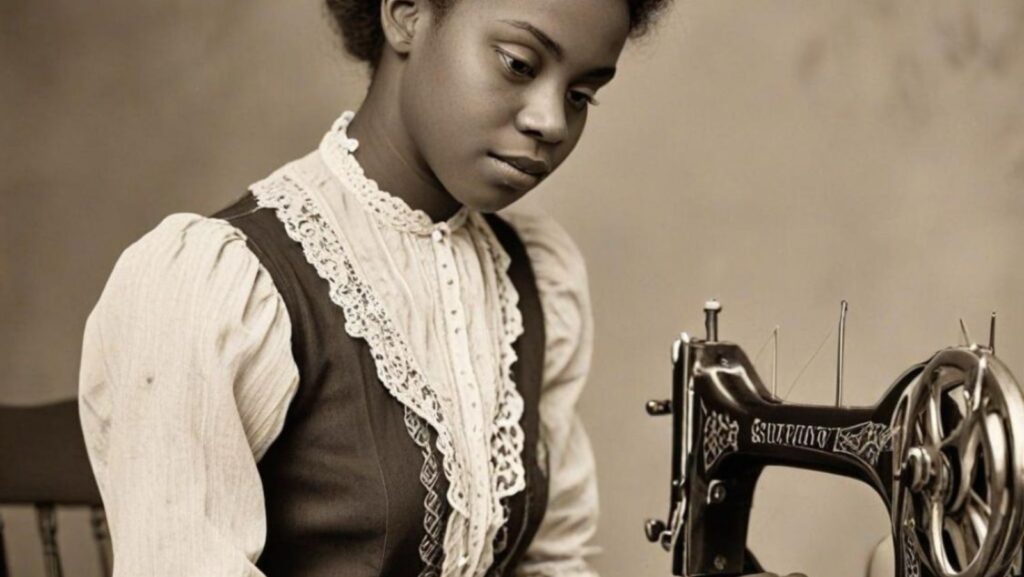HISTORY
The Milliner’s Legacy
“Discover the inspiring story of Mildred Blount, a pioneering African-American milliner who broke barriers in early 20th-century New York City and Hollywood. From designing for high-society weddings to creating iconic hats for "Gone with the Wind," her legacy is a testament to talent, resilience, and grace.”
BWSMCONTRIBUTOR
The Milliner’s Legacy
The bustling streets of early 20th century New York City buzzed with the clamor of ambition and dreams. Among the throngs of people, a young African-American woman named Mildred Blount walked with purpose.

Born in 1907, Mildred had always seen hats as more than mere headwear. To her, they were expressions of identity, elegance, and resilience.
At the tender age of seventeen, Mildred received a commission that would set her on a path to greatness.
The granddaughter of Madam C.J. Walker, the first Black female self-made millionaire, was to be married.
Nine thousand invitations had been sent out for the grand affair, which was to be covered by none other than the New York Times. Mildred, without formal training but brimming with innate talent, crafted exquisite coronets of braided silver cloth for the bridesmaids.
Her work was so exceptional that it was mentioned in the Times’ coverage of the wedding, marking her first significant recognition: “coronets of braided silver cloth, designed and made by Miss Mildred Blount.”
Years passed, and Mildred’s reputation grew. Her journey took her to the illustrious doors of John Frederics, America’s royalty of hatters.
When she rang their bell, answering an ad for a learner, the staff was taken aback. No person of color had ever applied before. But Mildred, with quiet confidence, assured them of her talent. She was hired, marking another milestone in her burgeoning career.
In 1939, while working for John Frederics, the design house received a prestigious commission: to create hats for the upcoming film, Gone with the Wind. Mildred was entrusted with this critical task.
Her designs were stunning, adding a touch of authenticity and beauty to the film. Yet, despite her contributions, she never received credit for her work. This oversight did not deter her; instead, it fueled her determination.
Determined to forge her own path, Mildred established her label. However, the Hollywood film industry was tightly regulated, and only union members were allowed to design for movies.
Mildred’s strong designs and impeccable skills earned her a groundbreaking membership to the Motion Pictures Costumers Union, making her the first Black person to be admitted.
With this newfound legitimacy, she continued to design hats for numerous films, including the 1941 hit Back Street. Her miniature hat studies for the film, along with 24 other designs, would later be housed in the Los Angeles County Museum of Art’s Costume and Textiles collection, a testament to her enduring legacy.
As Mildred’s fame spread, so did her clientele. Celebrities and socialites alike sought her out. Joan Crawford, Ginger Rogers, Mary Pickford, and even Gloria Vanderbilt wore her creations. For Vanderbilt’s first wedding to Pat DiCicco, Mildred designed a stunning headpiece and veil.
At these weddings, and countless others, Mildred was not just a designer but an honored guest, refusing to enter through the back door, a statement of her equality and respect.
In April 1946, Ebony magazine captured the essence of her journey and spirit: “An honored guest at many society weddings, Mildred Blount has always refused the mock-humility of the back door entrance.”
Her story was one of courage and conviction, a testament to her belief in her worth and her refusal to be constrained by the prejudices of her time.
Mildred Blount’s life was a symphony of resilience, talent, and grace. She transformed the world of millinery, not just with her exquisite creations but with her unwavering dedication to breaking barriers and setting new standards.
Her legacy continues to inspire, a reminder that true artistry knows no bounds and that dignity and elegance can transcend even the most entrenched prejudices.
Learn more here








































